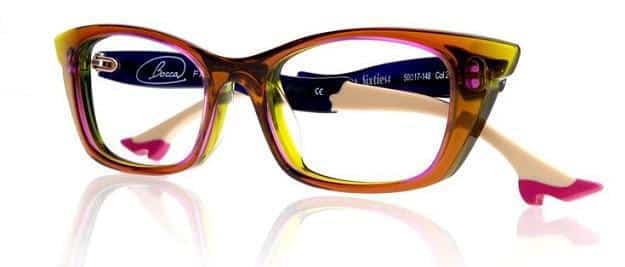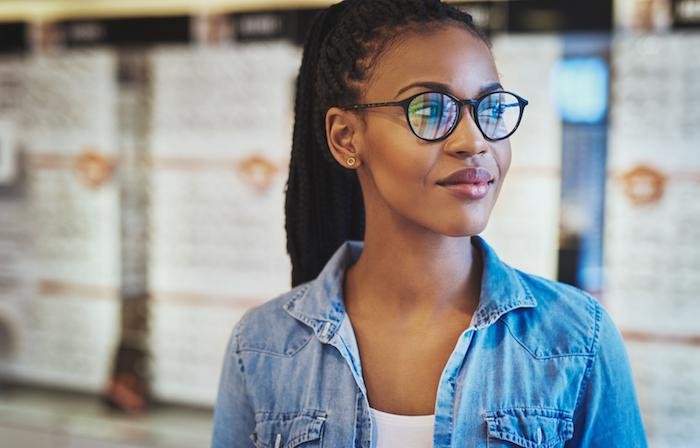If you wear glasses, then you know that your frames are one of the first things people notice. Your glasses tell others about your style and how you see yourself (no pun intended). So, naturally, you want to make sure that your frames not only fit you and feel good, you want to make sure they LOOK GOOD on you.The job of your optical professional is to help you find your proper prescription and to make sure that the frames fit on your face – so they don’t pinch or easily slip off. Their job isn’t to help you find the right style to match your face.Not to worry! This article will help you out! There are a few simple, general “rules” to follow to make sure your frames flatter you and your face shape.Picking the right frameThe three things you want to look at with a fame is its size, material, and shape of the frame. Let’s start with shape. There are not hard and fast rules but good guidelines. Let’s first find your face shape. There are 7 types of face shapes. You can discover your face shape by looking at a picture of yourself or looking into a mirror and drawing six dots on certain parts of your face. You’ll just put three dots on each side of your forehead, cheekbones, and base of the jaw. Then match up your face to one of the basic 7 shapes (see diagram).
Oval
Let’s start with Oval face. The general rule of thumb is you want to achieve balance. For an oval face choose frames that are as wide or wider than your face.
Diamond
With a diamond shaped face you want to widen the forehead and jaw to minimize the temples and cheekbones. Go with straight or rounded frames that are heavy on top and a frame that sits lower on your face.
Round
With a round face, the goal is to make your face look longer and thinner. With angles or horizontal lines, you make the face look more angular. Choose frames that are wider than they are long.
Square
For square faces your goal is choose frames that make your face look longer. Also, choosing frames that are wider than your face help bring balance. Look for weight on top. Curved, narrow styles reduce squareness and lengthen the face.
Triangle
For Triangle shaped faces add width to the top to soften the jaw, chin, cheek lines. Accent your eyes with unique shapes and colors. Top Heavy frames that have an inward angle or even rimless bottoms work well.
Inverted Triangle
Like the triangle shaped faces you want to balance the look. Lenses that are longer tend to work better for balance in this face shape.. Frames that sit high on your face are helpful. Using light colors or rimless frames work well.
Rectangular
To balance out a rectangular face you want to make the face appear shorter and wider. Frames with longer lenses and wider shape work well to do that. Having a decorative temple also tend to widen the face with this shape.
Keep in mind that these are rules of thumb and sometimes rules are meant to be broken. It’s like choosing a wine with your food. Sometimes you want a Pinot Grigio with your fillet mignon and sometimes you want a more traditional Cabernet Sauvignon.
You have more than one pair of shoes for different looks …and glasses can be the same way! Trust your look with an expert that knows the science of the lenses and the latest fashionable looks.
Schedule your frame selection now by calling 770.499.2020.
You Might Also Enjoy…
Are Glasses Better than Contacts?
Trying to decide between wearing eyeglasses or contact lenses? Consider all the factors, including comfort, ease, and appearance. We’ve compiled a list of pros and cons to help you see your way through this significant decision.
Why Sunglasses are Important All Year Long
No doubt you always have your favorite shades close by all summer. But sunglasses protect your eyes all year long, even during darker winter months. Learn how they shield your eyes from harmful ultraviolet (UV) rays any time of year.
How Astigmatism Affects Your Vision
Astigmatism causes a variety of symptoms ranging from blurred vision to eye discomfort and pressure. Understand how a comprehensive eye exam can pinpoint the cause of your symptoms and get your sight back on track.
Who Is at Risk for Glaucoma?
Could you be at risk for glaucoma? The short answer is that everyone, especially seniors, is at risk for glaucoma. Learn how to lessen your odds of losing your sight through early detection and treatment.
5 Steps to Prevent Diabetic Eye Disease
People with diabetes are more vulnerable to certain eye diseases, such as glaucoma, cataracts, and diabetic retinopathy. Learn what steps you can take to slow their progression and potentially avoid them in the first place.
Am I a Candidate for Contact Lenses?
If you need vision correction, contact lenses are a popular option. If you’re simply tired of your glasses or just looking to see the world more clearly, discover whether contact lenses may be the perfect fit for you.







